#samadhi of ranjit singh
Text

10 notes
·
View notes
Text
Maharani Jind Kaur
Maharani Jind Kaur, also known as Rani Jindan, was a significant figure in Sikh history, serving as the last queen of the Sikh Empire from 1843 to 1846. Born in 1817 in Gujranwala, she became the youngest wife of Maharaja Ranjit Singh, the founder of the Sikh Empire. After Ranjit Singh's death in 1839, Jind Kaur took on the role of regent for her son, Maharaja Duleep Singh.
Jind Kaur's reign as regent was marked by political turmoil and conflict with the British East India Company. In 1845, during the First Anglo-Sikh War, she dispatched the Sikh Army to confront the British, leading to the annexation of the entire Punjab in 1849. After her son's dethronement, she faced imprisonment and exile by the British.
Despite challenges, Jind Kaur escaped captivity in 1849, disguising herself as a slave girl and finding refuge in Nepal. Her efforts to resist British dominance continued through correspondence with rebels in Punjab and Jammu-Kashmir. She later reunited with her son in Calcutta in 1861, influencing him to return to Sikhism.
Jind Kaur's exile took a toll on her health, and she passed away in her sleep on August 1, 1863, in Kensington, England. Denied the opportunity to be cremated in Punjab, her ashes were eventually brought back to India in 1924 and reburied in the Samadhi of Maharaja Ranjit Singh in Lahore.
Despite her challenging life and exile, Maharani Jind Kaur's legacy endures as a symbol of resilience and resistance against colonial rule. In 2009, a memorial plaque was unveiled at the Kensal Green Dissenters Chapel, honouring her contributions to Sikh history.
#sikh empire#jind kaur#mahrani jind kaur#maharaja duleep singh#duleep singh#history#women in history#indian women in history#colonialism#british imperialism#indian royalty
12 notes
·
View notes
Photo

“Do us a favor.
Let grief go to grief,
joy to the joyful,
the rose to the rose garden.
Soul will rise to the sky.” -Rumi
•
Ranjit Singh Samadhi.
Lahore, Pakistan. (Instagram: aabbiidd)
#aabbiidd#lahore#Government of Punjab#pakistan#ranjit singh#samadhi of ranjit singh#beautiful architecture#walled city of lahore#beautifuldestinations#quotes#rumi#badshahi masjid#details#windows#walls#minaret
2K notes
·
View notes
Text
Amazing View of Badshahi Mosque Lahore
Amazing View of Badshahi Mosque Lahore
#Samadhi of Ranjit Singh#Punjab Pakistan#Pakistan#Lahore#Jahangir Tomb#Islam#British Empire#Badshahi Mosque
0 notes
Text
Amazing View of Badshahi Mosque Lahore
Amazing View of Badshahi Mosque Lahore
#Samadhi of Ranjit Singh#Punjab Pakistan#Pakistan#Lahore#Jahangir Tomb#Islam#British Empire#Badshahi Mosque
0 notes
Photo

The Samadhi of Maharajah Ranjit Singh is located inside the Gurdwara Dera Sahib in Lahore. Ranjit Singh was the founder of Sikh empire and ruled Punjab longer than any other Punjabi. #punjab #lahore #sikh #history #travel #travelphotography #worldtraveler — view on Instagram https://ift.tt/3cCsA57
2 notes
·
View notes
Photo
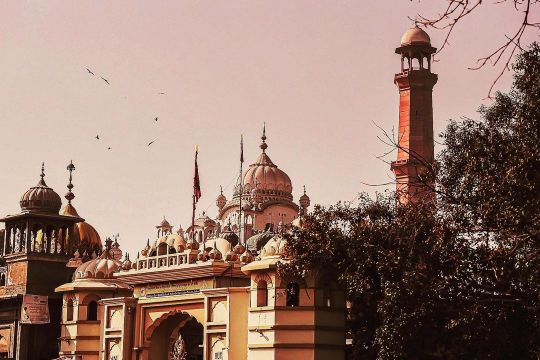
Samadhi of Maharaja Ranjit Singh (Samadhi of Ranjit Singh) https://www.instagram.com/p/Caehf1ftU_6/?utm_medium=tumblr
0 notes
Photo
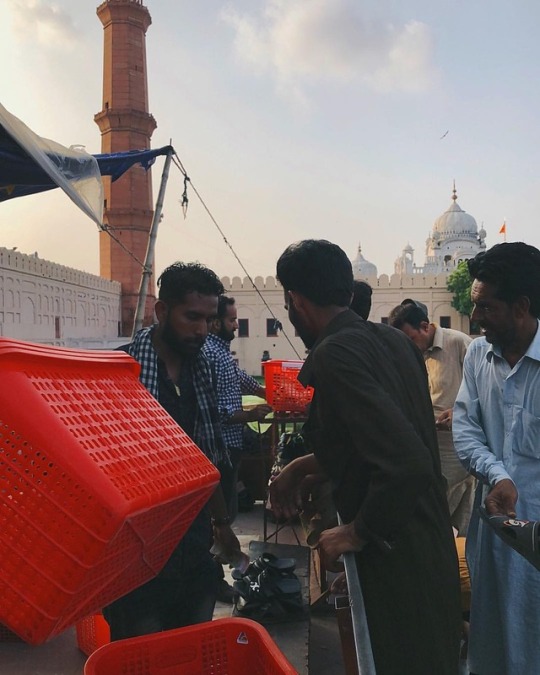
Tourists and locals depositing their shoes off before entering Badshahi Mosque. The Samadhi of Ranjit Singh can also be seen. #ChasingLife #ShotoniPhone #EverydayPakistan (at Lahore, Pakistan)
2 notes
·
View notes
Text
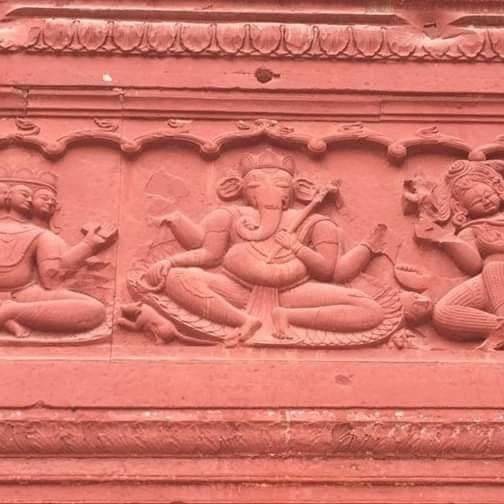


https://dharma-basics.blogspot.com/2021/08/blog-post.html
सनातन व सिखी में कोई भेद नहीं।
महाराजा रणजीत सिंह जी की समाधि, लाहौर पाकिस्तान
दरवाजे के ऊपर देखे सनातनी देवों के स्वरूप
Maharaja Ranjit Singh's Samadhi, ground floor front entrance door carved in red stone with images of Sanatani deities . Its near to roshani darwaza.
Place : Lahore Pakistan
मात्र 100-125 वर्ष पीछे जाए, 1860-1920 के समय काल से पूर्व सनातन व सिखी में कोई भेद नहीं मिलेगा
Just go 100-125 years back, before the time period 1860s to 1920s you won't find a difference between Sanatan & Sikhi.
ब्रिटिश अफसर मैकॉलिफ्फ द्वारा और उसके पश्चात खड़ी की गई सभाएं ही कारण है आज भिन्नता का
सभी सनातनी प्रथाएँ व पुरातन सिखी के सभी चिन्ह, शिक्षाएं धीरे धीरे अलग की गई
1909 तक अग्नि फेरो के साथ विवाह होता था और 1920 तक केशधारी व सहजधारी सभी गुरुद्वारों की देख रेख व सेवा में रहते थे, इसके पश्चात ब्रिटिश पोषित ठेकेदारी का युग प्रारम्भ हुआ सभी गुरुद्वारों पर हमला कर कब्जाया गया और सनातन से सिखी अलग करने का हर भरसक प्रयास भी किये गए जो आज तक अभ्यास में हैं।
Join Awakened Bharat | जागृत भारत to become awakened voice of Bharat
Join Sanatan Aarthik Sangh | सनातन आर्थिक संघ (SAS) to strengthen Sanatan Eco-system
Join Sanatan Legal Tantra | सनातन लीगल तंत्र for legal help
Join Sanatan Sahyog Tantra | सनातन सहयोग तंत्र (Helpost) for general help
0 notes
Text
When and by whom was Shree Samadhi Mandir built?
Samādhi or samadhi mandir is the Hindi name for a temple, shrine or memorial commemorating the dead which may or may not contain the body of the deceased. Samadhi sites are often built in this way to honor people regarded as saints or gurus in Hindu religious traditions, wherein such souls are said to have passed into mahāsamādhi, or were already in samādhi at the time of death.
Ruined group of samadhi for the rajas of Kutch and their courts, at Bhuj, Gujarat.
Samadhi is also used in Sikhism for the mausoleums of eminent figures, both religious and political. Examples include the Samadhi of Ranjit Singh in Lahore, and that of Maharaja Sher Singh near Lahore. Hindu equivalents are usually called chatri, although those for Maratha Empire figures also often use "samadhi".
The forms of structure called "samadhi" vary greatly. The word is sometimes used for a memorial stele, also called paliya, a type of hero stone once common in parts of Gujarat and Sindh. It may be used for small memorial buildings such as open chatri, often placed around a temple.
The tradition of India is cremation for most Hindu people at the time of death, while samadhi is generally reserved for very advanced souls, such as yogis and saints, who have already been "purified by the fire of yoga"[4] or who are believed to have been in the state of samadhi at time of death. Samadhi may not involve cremation.
0 notes
Text

4 notes
·
View notes
Photo

The Samadhi of Ranjit Singh is an 18th-century building in Lahore, Pakistan that houses the funerary urns of the Sandhawalia Jat Sikh ruler Ranjit Singh (1780 - 1839). Completion date 1848 It is located adjacent the Lahore Fort and Badshahi Mosque, as well the Gurdwara Dera Sahib which marks the spot where the 5th guru of Sikhism, Guru Arjan Dev, died. Construction of the building was started by his son, Kharak Singh on the spot where he was cremated, and was completed by his youngest son, Duleep Singh in 1848. The building combines elements of Sikh, Hindu, and Islamic architecture.Portions of the building are believed to have been plundered from the adjacent #LahoreFort. Ranjit Singh's ashes are contained in a marble urn in the shape of a lotus, sheltered under a marble pavilion inlaid with pietra dura, in the centre of the tomb. Surrounding him, in smaller urns, are the ashes of four sati queens and seven concubines. Two small monuments to the west of the main building commemorate Maharaja Ranjit Singh's son #Maharaja #KharakSingh and #grandson Nau Nihal Singh, along with their wives. The building is located adjacent to #Gurdwara Dera Sahib, the place where martyrdom of #GuruArjun took place. #minoritiesinpakistan #humsubkapakistan #MainHOONPakistan #Pakistan #Sikh #Hindu https://www.instagram.com/p/B_RpUqopqVN/?igshid=1btgisap0vw0h
#lahorefort#maharaja#kharaksingh#grandson#gurdwara#guruarjun#minoritiesinpakistan#humsubkapakistan#mainhoonpakistan#pakistan#sikh#hindu
0 notes
Text
Pul Kanjari Amritsar-Trading Bar to Field of War

If the holy gurus and saints have blessed the Amritsar city spiritually, rulers like Maharaja Ranjit Singh have blessed the city historically. According to notable historians, Maharaja's favorite recreational sites were Amritsar and Lahore.
Due to which he had built extraordinary architectural buildings in these cities. Half of the monuments went to Pakistan after partition including Samadhi of Maharaja Ranjit Singh, which is now in Lahore, Pakistan. But few monuments like summer palace; pul kanjari etc. adds charm to India's Punjab.
Pul kanjari Amritsar- the weird name of the place has an interesting story behind it. It is located at Amritsar-Lahore road near the Wagah border close to the village Doaka.
This heritage site was once used for trade purposes by Maharaja Ranjit Singh. Moreover, the maharaja was fond of this place because of dancer Moran. Moran was sent a special invite to perform by Maharaja Ranjit Singh, whenever he visited the place.
Back in those times, one had to cross a canal to reach the courts of the palace. The canal was built by Emperor Shah Jahan to irrigate the Shalimar Gardens of Lahore. Once, Moran, the dancer was crossing the canal. But before she could cross the canal completely her silver shoe fell into the canal. She got upset over it and refused to perform. Moran said she will dance only if maharaja promises to build a bridge (pul in Punjabi) to cross the canal.
Maharaja Ranjit Singh being extremely fond of her, built the bridge and named it after her. (In Punjabi language female dancers then were referred as "kanjaris").
But almost a century later, the horrific war happened between India and Pakistan. Pul kanjari Amritsar being close to the Wagah border was targeted by the Pakistani army.
History of the Memorial built in Pul Kanjari Amritsar
During the Indo-Pak war of 1971, Pul kanjari Amritsar was occupied by Pakistani troops, but not for a long period. Several brave soldiers laid their lives to save the historical heritage from the clutches of Pakistani troops.
Painting at the side of the war memorial depicts a war scene, in which of the brave men who got martyered, Shaheed Lance Naik Shangara Singh from the Sikh Regiment can be seen snatching a medium machine gun (MMG) from the Pakistani soldier. Singh was honored with Maha Vir Chakara after his death.
Besides the pul and war memorial, there are several other things that traveler can explore at the site. Sarovar, shiv temple, baradari are other things that adds up to the glory of architecture by Maharaja Ranjit Singh.
0 notes
Photo

"God, take my soul to
that place, where I may
speak without words." -Rumi
•
Badshahi Mosque.
Lahore, Pakistan. (Instagram: aabbiidd)
#aabbiidd#lahore#punjab#pakistan#Badshahi Masjid#shahi qila#gurdwara#ranjit singh samadhi#minaret#wanderlust#rumi#rumi quotes#love#photography#sky#clouds#architecture#beautifuldestinations#travel#walled city of lahore
2K notes
·
View notes
Text
Pakistan To Unveil Statue Of Maharaja Ranjit Singh In Lahore On The Ruler's 180th Death Anniversary
Pakistan To Unveil Statue Of Maharaja Ranjit Singh In Lahore On The Ruler’s 180th Death Anniversary
On the occasion of the 180th death anniversary of Maharaja Ranjit Singh, who ruled Punjab for almost four decades, a life-size statue of the ruler will be unveiled in Lahore on Thursday.

The statue will be installed outside the Mai Jindian Haveli in Lahore Fort, just nearby the building that houses the samadhi of Maharaja as well as the Gurudwara Dera Sahib of Guru Arjun Dev.
The pictures…
View On WordPress
0 notes
Photo
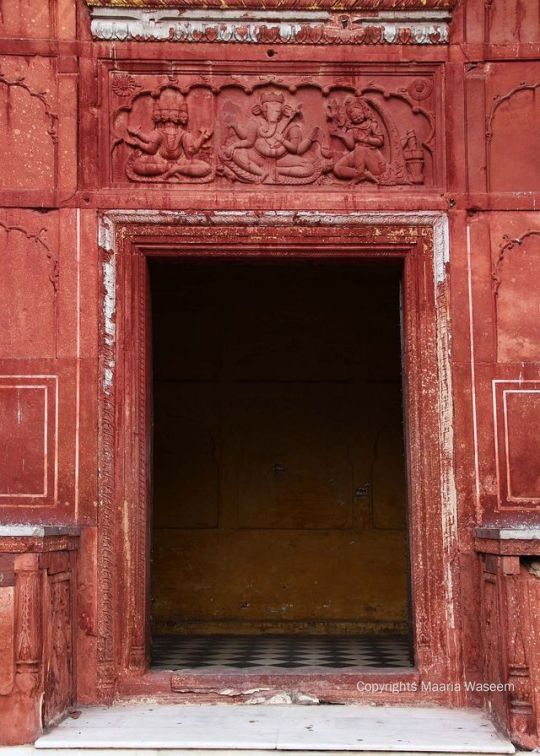
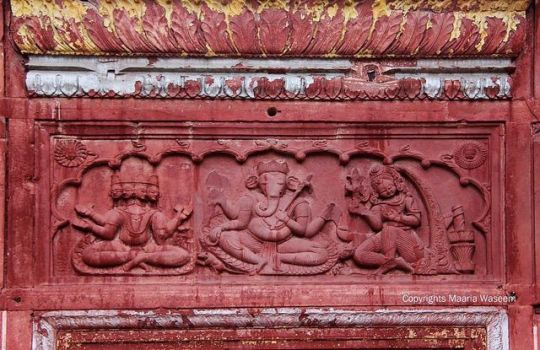

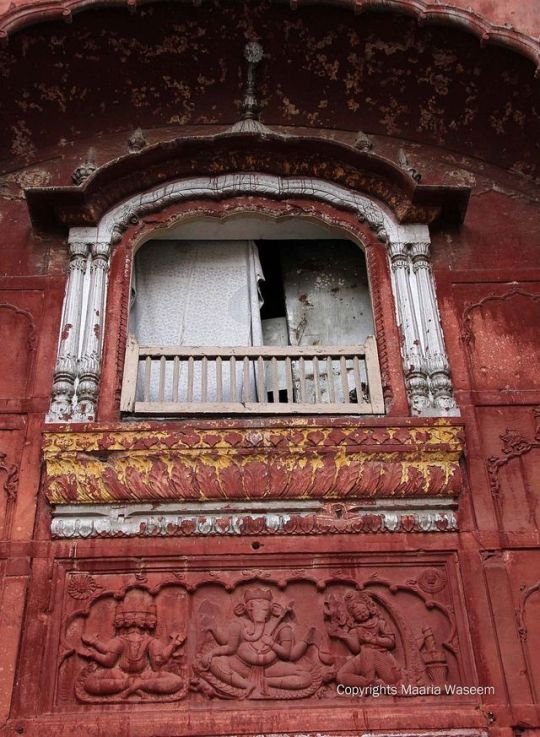
Brahma, Ganesha, Shiva on the Entrance of Sikh Samadhi. Lahore, Pakistan
Photographer: Maaria Waseem (via Twitter: Maaria Waseem)
Relief on the Carved Doors of the Gateway to Maharaja Ranjit Singh’s Samadhi.
The orientation of the gateway is towards east in conformity with the general practice observed for Hindu temples as "it is the auspicious direction of the rising sun, whose first rays illuminate the interior of the shrine at dawn".
46 notes
·
View notes